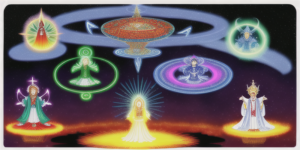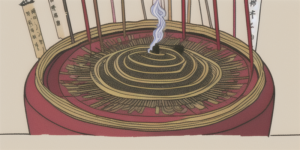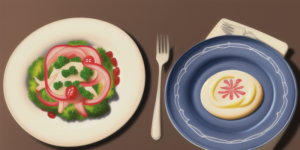Contrary to popular assumptions, the color spectrum of a monk’s robe doesn’t carry any symbolic or representational weight. It’s a misconception that the robe’s hue is a deliberate choice or that it represents elements such as fire or flame. In truth, a genuine enlightened master, far removed from superficial identifiers, doesn’t seek to outwardly signify or affiliate his identity with any symbolic representations, including the color of his attire.
The color of the monk’s robe was never a delibrate decision, especially in regions like Thailand or India, where orange-hued robes are commonly observed. Historically, the primary color of these spiritual garments was white. This choice was guided more by economic constraints than aesthetic preferences. Colored dyes were a luxury most people in ancient times could ill afford. White linen, being cheaper, was the ubiquitous choice, serving also as a social stratifier, separating the poor from the wealthy.
Buddha, before attaining enlightenment, encountered numerous gurus who imparted their wisdom and knowledge. These spiritual mentors traditionally wore white robes, which often appeared soiled, reflecting the austere conditions of their ascetic lifestyle. Their garments bore the imprint of the local terrain’s sand and soil, a testament to the rigorous meditative retreats and practices they undertook.
Interestingly, the color of a monk’s robe often mirrors the predominant soil color in the area of their spiritual practice or retreat. This correlation isn’t symbolic but rather a practical consequence of their environment. Tibetan monks, for example, are frequently seen in red robes, mirroring the region’s abundant red soil. In areas dominated by orange soil, monks’ robes are similarly hued.
This trend continued as Buddhism expanded its geographical footprint. In China, where certain regions are rich with black soil, the monks’ robes naturally assumed a darker tint. The same principle applies to Japan, where some monks are seen in blue robes, resonating with the regions that have Gley soil, known for its distinctive bluish color.
In regions where brown soil is plentiful, monks’ robes inevitably take on a similar shade due to frequent contact, resulting in the local monks often being seen dressed in brown robes. Similarly, in areas where the soil is dominantly red, the monks’ robes naturally acquire a reddish hue due to persistent exposure to the red soil.
Monks often venture into remote regions for their spiritual practices, living in close communion with nature. Their ascetic lifestyle, which includes sleeping on the ground rather than on beds, causes their robes to naturally adopt the color of the local soil. Hence, we see a vibrant palette of robe colors, from red, grey, and black, to maroon, orange, and blue. These colors, though visually distinctive, aren’t intentionally chosen to symbolize or represent anything. Instead, they are a direct reflection of the various soil hues the monks interact with in their spiritual journeys.
Moreover, soil has an even deeper significance in the lives of these ascetics. It was used as a rudimentary form of hygiene and protection against bacteria, given that certain soil types have inherent antibacterial properties. In ancient times, ascetics would cover their bodies with soil. This practice wasn’t merely hygienic but was also believed to have spiritual benefits. It was thought that the soil’s convection effect helped retain the body’s energy during meditative practices. This illustrates the profound, symbiotic relationship between the monks and the earth, transcending the spiritual to encompass the practical and the physical. Their existence was intertwined with the land, each influencing and shaped by the other.




